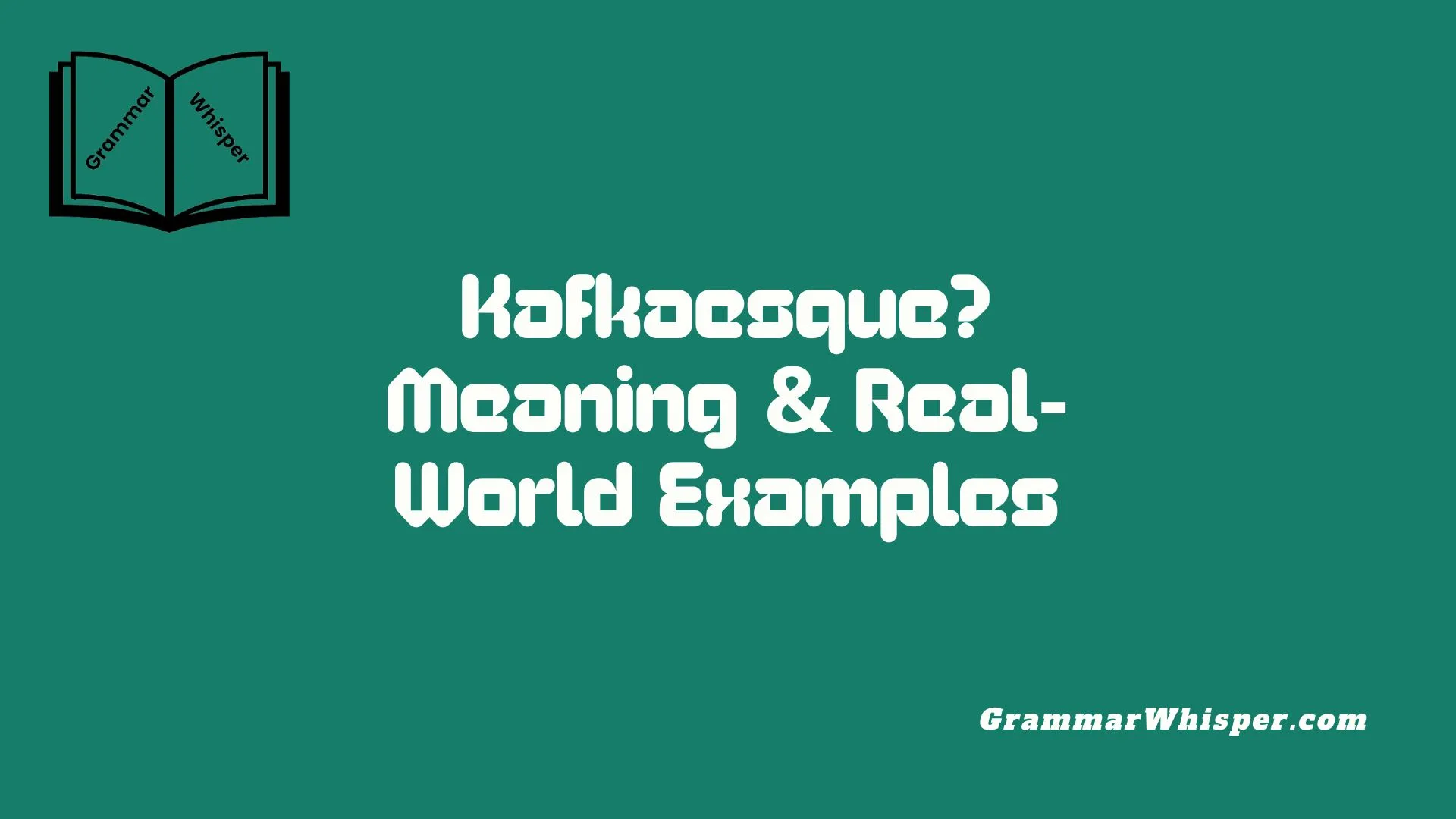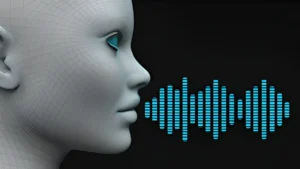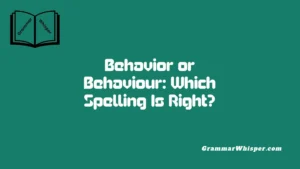Sometimes I feel trapped in a maze of pointless rules and endless forms, a true Kafkaesque feeling that perfectly fits the phrase born in the mid-20th century. It still captures the confusion we face today, as we keep living in a modern world filled with bureaucratic loops and surreal demands that leave us beaten and even helpless. Just like in Kafka’s stories, which Franz wrote to describe situations so absurdly complex, illogical, and nightmarishly strange, our reality can feel more real than fiction.
In my work, I have learned how systems can easily overwhelm reason, cloud justice, and quietly sap humanity. This Kafkaesque reality warns me to stay alert to how rigid setups can grow unchecked. When I hear people complain about being stuck in endless paperwork, I always remember how deeply these old tales still speak to our lives. They show that tangled processes and surreal barriers are more than fiction – they shape our daily struggles.
The Root of Kafkaesque: Origins & Evolution
Who Was Franz Kafka?
Franz Kafka (July 3, 1883–June 3, 1924) was a Prague-born German-speaking writer. He penned surreal short works and ambitious novels – The Trial, The Castle, The Metamorphosis – capturing alienation, anxiety, and absurdity.
How Kafkaesque Entered the Lexicon
- Earliest citation: 1936, in C. Day-Lewis’s writing.
- Popular usage: Post-1945, dictionary entries define it as “senseless, disorienting, often menacing complexity”
- Spread in media: As bureaucracy grew, journalists started calling real-life nightmares Kafkaesque.
What Kafkaesque Means: Formal Definitions
Let’s compare top dictionaries:
Summed up: Kafkaesque blends disorienting complexity, impersonal systems, surreal or nightmarish features, and a sense of hopelessness.
The Building Blocks of Kafkaesque Situations
Here’s a deeper dive into the traits that define Kafkaesque:
Labyrinthine Bureaucracy
- Big institutions that feel faceless
- Endless red tape, procedure-heavy
- You’re just a number – assigned, shuffled, ignored
Powerlessness & Alienation
- Characters feel unseen and unheard
- They wrestle with invisible forces
- Emotional isolation is a core theme
Illogical Rules or Outcomes
- Processes defy logic or cause-and-effect rules
- Rules contradict or change without notice
- You follow procedures, but hit brick walls again and again
Surreal or Nightmarish Reality
- Real world becomes dreamlike
- Rules shift unexpectedly
- Ordinary settings lodge deep discomfort
No Resolution or Escape
- Dead-end scenarios, circular logic
- The main characters spiral into despair
- Outcomes disappoint or confuse
Kafkaesque in Kafka’s Own Works
The Trial
Josef K. wakes up accused without reason. He navigates closed courts and secret judges. Kafka paints a system that swallows individuals in silence. Key quote: civic interactions feel powerless and unreasoned
The Metamorphosis
Gregor Samsa wakes as a bug – but his mind tries to function normally. His family treats it like a mere inconvenience. The tension lies in human response to surreal change
The Castle
K. arrives at work at a castle filled with odd authority. Communication loops trap him endlessly. No clarity, no purpose, no sense of arrival.
Kafkaesque in Real Life: Modern Examples
Bureaucratic Gridlock
- Immigration systems: Applicants float in ID limbo, denied updates, and rules change without notice.
- Customer support hell: You get looped through bots, reps can’t help, and you spiral
- Tax/loan/invoice nightmares: No one seems responsible; you’re bounced from desk to desk
Workplace & Algorithmic Maze
- Automated hiring systems: Your resume disappears down a glitchy pipeline.
- Algorithmic decision-making: Targeted ads, denial-of-service, credit rejections with zero explanations
Social Media’s Kafkaesque Court
Social platforms subject users to shadow bans, flagging, and content removal:
“The site is an accusation aggregator… the news feed is the docket-full of opportunities to publicly admire the good or publicly denigrate the bad”.
Kafkaesque in Pop Culture & Media
- Film: Brazil (1985) by Terry Gilliam – bureaucratic dystopia, absurd red tape labyrinth
- TV: Black Mirror, Severance – Apple TV+ drama mirrors Kafka’s nightmarish alienation
- Literature: Haruki Murakami’s Kafka on the Shore, dystopian tales in Orwellian style
- More pop culture nods: Twin Peaks, Videodrome, often labeled Kafkaesque for their eerie structure
Misuse & Overuse: When Kafkaesque Fails
Some overuse it for minor annoyances:
- Calling long hotel check-ins Kafkaesque stretches the meaning
- “That coffee line was Kafkaesque” dilutes the core idea
True Kafkaesque involves:
- Deep, opaque systems
- Life‑oriented alienation
- Psychological hopelessness, not just inconvenience
Why Kafkaesque Matters in 2025
It’s a Lens on Systems
When policy grows complex and opaque, Kafkaesque warns of human cost. Lawmakers’ constant reforms backfire – leading to inefficiency
It’s a Psychological Insight
It highlights how complexity can crush identity, hope, and dignity.
It Impacts Design Thinking
If tech or services ignore this, people pay emotionally and financially.
Case Study: Italian Bureaucracy Gone Kafkaesque
A study in the American Economic Review tracked how instability and rushed laws morphed bureaucracy into Kafka-style red tape in Italy.
- Fragmented legal reforms overloaded public servants
- Institutions became slower, more confused, and more impersonal
Key takeaway: Good intentions backfire without clarity and simplicity.
Signs You’re in a Kafkaesque Moment
- You submit documents, then lose them
- Every agent gives a different story
- The process has no known end
- You cannot find a human to resolve it
- Your personal experience is ignored
When your senses scream “this doesn’t make sense,” you’re probably in Kafkaesque territory.
Conclusion:
The term Kafkaesque is more than just literary jargon – it’s a warning. It signals when systems become so overwhelming, so absurdly complex, that they rob people of their voice, dignity, or even logic itself. What Franz Kafka wrote as surreal fiction now feels eerily real in digital forms, corporate frameworks, and bureaucratic labyrinths.
In a time of artificial intelligence, impersonal automation, and convoluted processes, recognizing the Kafkaesque becomes a survival skill. It helps us speak out when systems fail, and it urges leaders, designers, and policy-makers to humanize their work.
The key takeaway? Don’t just navigate the maze – question why the maze exists in the first place.
FAQs
What is the literal meaning of Kafkaesque?
Kafkaesque describes scenarios that are absurdly complex, illogical, or nightmarish – especially ones involving oppressive bureaucracy, powerlessness, or bizarre systems. It stems from the work of Franz Kafka, whose characters are often trapped in such environments.
Is Kafkaesque only about government or law?
Not at all. While government bureaucracy is a common setting, Kafkaesque moments happen in corporate workplaces, digital algorithms, customer support systems, social media moderation, and even automated job applications. It applies anywhere there’s an overwhelming or illogical system that strips away personal agency.
How can I tell if something is Kafkaesque or just frustrating?
Frustration usually has a clear reason and resolution. Kafkaesque experiences are marked by:
- Confusing, contradictory rules
- Endless loops with no escape
- Cold or indifferent institutions
- A sense of being watched or judged without cause. If it feels nightmarish, confusing, and hopeless, you’re likely in Kafka’s world.
Why is the term Kafkaesque still used today?
Because the modern world is full of invisible systems and bureaucracies. Kafka’s stories anticipated the way people can feel powerless in front of complex institutions. His fiction became a mirror for our reality, especially in tech, law, and global administration.
Can Kafkaesque be used positively or humorously?
Sometimes. Satire and comedy can highlight Kafkaesque elements to criticize institutions in a clever way. Think of shows like Severance or films like Brazil. They exaggerate absurd systems to reveal real human truths, often using humor to soften the blow.











